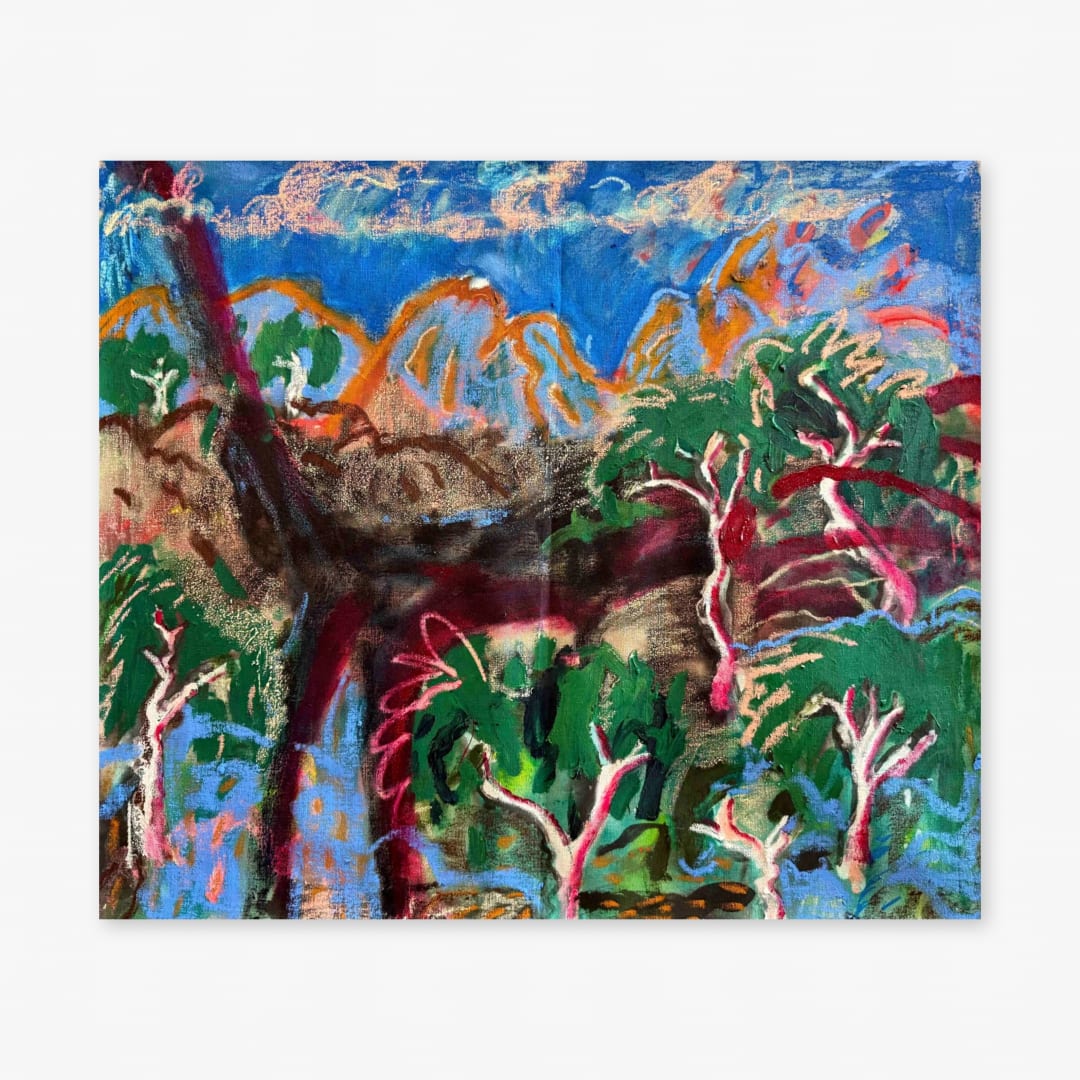Zak Tilley (he/him) is a Naarm-based artist and researcher whose practice explores the entanglements of belief, perception, and place. Raised in the conservative evangelical border suburbs of Western Sydney (commonly referred to as the ‘Bible Belt’), Tilley’s early experiences as a queer person in this semi-rural environment continues to inform his work, which interrogates identity, marginalisation, and myth.
Tilley holds a Bachelor of Fine Arts from UNSW College of Fine Arts (2014) and a Master of Teaching, where his thesis in autoethnoartography examined the identity complexities of colonial art education within broader structures of power and cultural authority. His early practice engaged with expressive depictions of the Australian environment but has since shifted toward materially and conceptually driven investigations into folklore, theology, and the mythologisation of place. Working across painting, sculpture, and installation, Tilley’s work explores how belief systems and cultural narratives are embedded in materials, forms, and processes - often through tension, disruption, and partial visibility.
Tilley is also active in community arts, having lived and worked in Mparntwe (Alice Springs) where he founded Bath House Studios in collaboration with the National Trust, transforming an unused 1920s Victorian house into a subsidised studio space for local artists. His work in arts education and advocacy includes youth development programs, remote community workshops, and extensive experience in grant writing for individual artists and organisations, particularly those led by or supporting disabled artists and First Nations artists.
ARTIST STATEMENT
My practice investigates how belief structures shape perception - how we come to see what we believe, rather than simply believe what we see. Working across painting, sculpture, and installation, I use folklore and mythology to examine the conditions under which something is deemed real, sacred, or threatening, navigating the thresholds of the reality–virtuality continuum. I’m particularly interested in the construction of archetypes and how figures of the outsider, the deviant, or the divine become containers for cultural panic, fear, and longing.
A central thread in my work is the recurring phenomenon of panther sightings in Australia: a living folklore persisting in regional memory and oral testimony. These accounts form the basis of ongoing research using autoethnographic, anthropological, and narratological methods. For me, the panther functions as an archetype of the feared, revered, and rejected projected onto the edges of geography and belief. It operates as a metaphor for queerness: ambient, elusive, and rendered illegible within dominant settler-colonial frameworks.
Paintings, sculpture, and installations investigate these sightings through both theological and queer epistemologies. Queerness is positioned as an archetype of reverence, deviance, marginalisation, and projected fear. Then by drawing on theological aesthetics to depict uncertainty, awe, and the sacred, I explore the thresholds where fear, reverence, and curiosity converge. These works treat the panther as a theophanic figure, a divine or spectral apparition that emerges at the edges of comprehension. In doing so, they draw parallels between the ambiguous presence of the big cat and the social positioning of queerness.
Materially, I often work with linen and canvas, oil stick, and pigment. Sculptural interventions borrow from ecclesiastical forms and relic aesthetics, creating quasi-devotional spaces that elevate witness accounts into mythic registers. By staging divine or ambiguous encounters through the aesthetics of faith (altars, shrouds, relics, and icons) I explore the instability of truth and the porous boundaries between belief, doubt, and desire.
Across all media, my work seeks to understand how cultural narratives or religion, folklore, or personal identities, shape our perception of the unknown, and how myth can serve as both my own archive of fear and a site of liberation.
